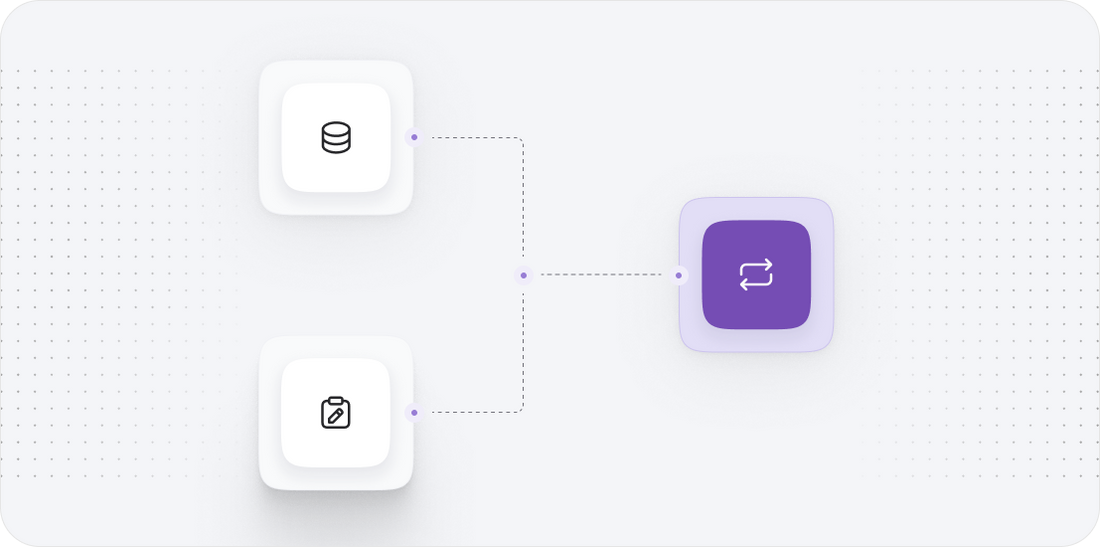





Salla to Shopify
Migrating your store from Salla to Shopify might seem daunting, but with proper planning and the right tools, it's a smooth process. Follow this step-by-step guide to ensure a successful transition.
Schedule a call
Step-by-Step Migration Guide: Salla to Shopify Migration Guide
Step 1: Preparing Your Salla Store for Migration
In this step, we will prepare your Salla store for a seamless migration to Shopify by conducting a thorough inventory assessment and data backup.
Step 2: Setting Up Your Shopify Store
In this step, we will create your Shopify store and configure the basic settings necessary for a successful launch.
Step 3: Migrating Product Data from Salla to Shopify
In this step, we will import your product data from Salla to Shopify to ensure your inventory is accurately represented in the new store.
Step 4: Migrating Customer Data from Salla to Shopify
In this step, we will transfer your customer data from Salla to Shopify, ensuring that all customer accounts and order histories are maintained.
Step 5: Setting Up Payment and Shipping Options in Shopify
In this step, we will configure the payment and shipping options in Shopify to match your business needs and provide a seamless customer experience.
Step 6: Testing and Quality Assurance
In this step, we will conduct thorough testing of the migrated Shopify store to ensure everything is functioning correctly before launch.
Step 7: Launching Your Shopify Store
In this final step, we will officially launch your Shopify store and implement strategies for post-launch optimization and marketing.
Power Your Step - Get in Touch
Contact PowerCommerce for expert support in your Salla to Shopify migration journey.
Step 1: Preparing Your Salla Store for Migration
Before undertaking any migration, it’s crucial to prepare your Salla store to ensure a smooth transition to Shopify. This preparation phase involves assessing your current inventory, customer data, product details, and other essential information that needs to be transferred. Additionally, we will create a comprehensive backup of your Salla store data to safeguard against potential data loss during migration.
First, we will conduct an inventory assessment to identify all products, categories, and customer data that require migration. This ensures that nothing is overlooked during the transition. The next step is to back up your data, which is essential for preserving your information and providing a fallback option in case of migration issues. This backup will typically include:
- Product Data: All product listings, including descriptions, pricing, and images.
- Customer Information: Customer accounts, order history, and contact details.
- Order Data: Past orders and shipping details.
- Content Data: Blog posts, page content, and any custom scripts.
To back up your data, follow these steps:
- Log in to your Salla dashboard and navigate to the data export section.
- Export your products, customers, and orders into CSV format. Ensure that all relevant data fields are included.
- Store these CSV files securely on your local machine or a cloud storage solution.
By accurately preparing and backing up your data, we mitigate risks associated with data loss and ensure a more efficient migration process.

Step 2: Setting Up Your Shopify Store
Once your Salla store is prepared, the next step is to establish your Shopify store. This involves creating an account with Shopify and configuring essential settings that will serve as the foundation for your new online store.
Here’s how to set up your Shopify store:
- Create a Shopify Account: Visit the Shopify website and sign up for an account. You will need to provide your email address, create a password, and choose a store name.
- Configure Basic Settings:
- Store Information: Enter your business details, including address, email, and phone number.
- Payment Gateway Setup: Select your preferred payment methods (e.g., credit cards, PayPal, etc.) and set them up in the Shopify payment settings.
- Shipping Settings: Define your shipping rates and methods tailored to your business model and target customers.
- Select a Theme: Choose a theme that aligns with your brand identity. Shopify offers a variety of free and paid themes that can be customized to fit your aesthetic.
By following these steps, you will create a solid foundation for your Shopify store, ready for the migration of your products and data.

Step 3: Migrating Product Data from Salla to Shopify
Now that your Shopify store is set up, we can proceed with migrating your product data from Salla. This step is crucial as it ensures that all product listings, including descriptions, prices, and images, are accurately transferred to your new Shopify store.
To migrate product data, we will follow these detailed steps:
- Prepare CSV Files: Using the CSV files exported from Salla, ensure the product data is formatted according to Shopify's import requirements. You can find the template in the Shopify help center.
- Importing Products into Shopify:
- Log in to your Shopify admin panel.
- Navigate to the Products section and select All Products.
- Click on Import, then choose the CSV file you prepared.
- Shopify will prompt you to confirm the data mapping; ensure all fields are correctly matched.
- Click Start Import to begin the upload process.
After the import is complete, it’s essential to review your product listings for accuracy and completeness. Check for missing images, incorrect pricing, or formatting issues.

Step 4: Migrating Customer Data from Salla to Shopify
The next critical phase of the migration process involves transferring your customer data from Salla to Shopify. This step is vital to maintain customer relationships and preserve order history, ensuring a seamless transition for returning customers.
To migrate customer data, follow these steps:
- Prepare Customer CSV Files: Similar to product data, you will need to format your customer data CSV file according to Shopify's specifications. Ensure that fields such as name, email, and address are included.
- Import Customers into Shopify:
- Log in to your Shopify admin panel.
- Navigate to the Customers section.
- Click on Import Customers.
- Upload your prepared CSV file.
- Review the mapping fields to confirm accuracy before starting the import.
Once the import is done, confirm that all customer accounts are properly reflected in your Shopify store. It’s also a good practice to notify your customers of the migration and any new features they can expect.

Step 5: Setting Up Payment and Shipping Options in Shopify
With your product and customer data successfully migrated, the next step is to set up payment and shipping options in Shopify. This configuration is crucial for ensuring a smooth checkout experience for your customers.
To configure these options, follow these steps:
- Payment Settings:
- Log in to your Shopify admin.
- Navigate to Settings and select Payments.
- Choose your preferred payment gateways such as Shopify Payments, PayPal, or others and follow the setup instructions for each.
- Shipping Settings:
- Go to Settings and select Shipping and delivery.
- Set up shipping zones and rates based on your business model (flat rates, free shipping, etc.).
- Ensure to configure any necessary shipping integrations for logistics.
After completing these configurations, test your checkout process to ensure everything functions as expected, providing a seamless experience for your customers.

Step 6: Testing and Quality Assurance
Before officially launching your new Shopify store, it’s essential to conduct comprehensive testing to ensure that all functionalities are working correctly. This quality assurance phase helps identify any issues that could hinder customer experience.
Here’s how to perform testing:
- Functional Testing:
- Test all product pages to ensure they display correctly with accurate descriptions, images, and prices.
- Check customer account creation and login processes to confirm that customers can access their accounts.
- Checkout Process Testing:
- Simulate a complete purchase from adding items to the cart to completing the checkout.
- Verify payment processing with each payment method you have set up.
- Shipping and Notifications:
- Test shipping options by placing orders and ensuring the correct shipping rates are applied.
- Check notification emails (order confirmation, shipping updates) to ensure they are sent correctly.
By conducting thorough testing and resolving any issues, you can ensure a smooth launch and a positive customer experience.

Step 7: Launching Your Shopify Store
With all preparations, migrations, and testing completed, you are now ready to launch your Shopify store. This step marks the culmination of your hard work and sets the stage for your business’s growth in the new environment.
To successfully launch your store, follow these steps:
- Final Review: Conduct a last-minute check on all site features, product listings, and settings to ensure everything is in place.
- Enable Your Store: In your Shopify admin, navigate to Online Store then select Preferences. Make sure your store is set to 'Online.'
- Implement Marketing Strategies: Plan your marketing launch strategy. Consider using email marketing, social media announcements, and paid advertising to spread the word about your new store.
- Monitor Performance: After launch, closely monitor your store’s performance using Shopify’s analytics tools to track visitor behavior, sales performance, and conversion rates.
By effectively launching your Shopify store and implementing post-launch strategies, you are setting your business up for success in the digital marketplace.

Power Your Step - Get in Touch
We understand that migrating your ecommerce store can be a daunting task, but you don’t have to do it alone. At PowerCommerce, we specialize in seamless migrations from Salla to Shopify, ensuring every detail is handled with precision and care.
Don’t miss out on the opportunity to elevate your online store. Here’s how you can get in touch with us:
- Contact us through our website: Visit PowerCommerce Contact Form to fill out a quick inquiry form.
- Call us: Reach out directly at 800-099-9090 for immediate assistance.
- Email us: Send your questions to info@powercommerce.com for a prompt response.
Let us help you power your step towards a successful ecommerce future with Shopify. Our dedicated team is ready to assist you every step of the way!
Stay aligned on what's happening in the commerce world
Trusted by 1000+ innovative companies worldwide
Schedule Your Migration Today
For businesses prioritizing simplicity, scalability, and robust support, Shopify is the clear winner.
Looking to migrate without hassle? Power Commerce can handle the entire process, ensuring smooth data transfer, store setup, and post-launch success.
Marka Marulića 2, Sarajevo, 71000 BiH
00387 60 345 5801
info@powercommerce.com


